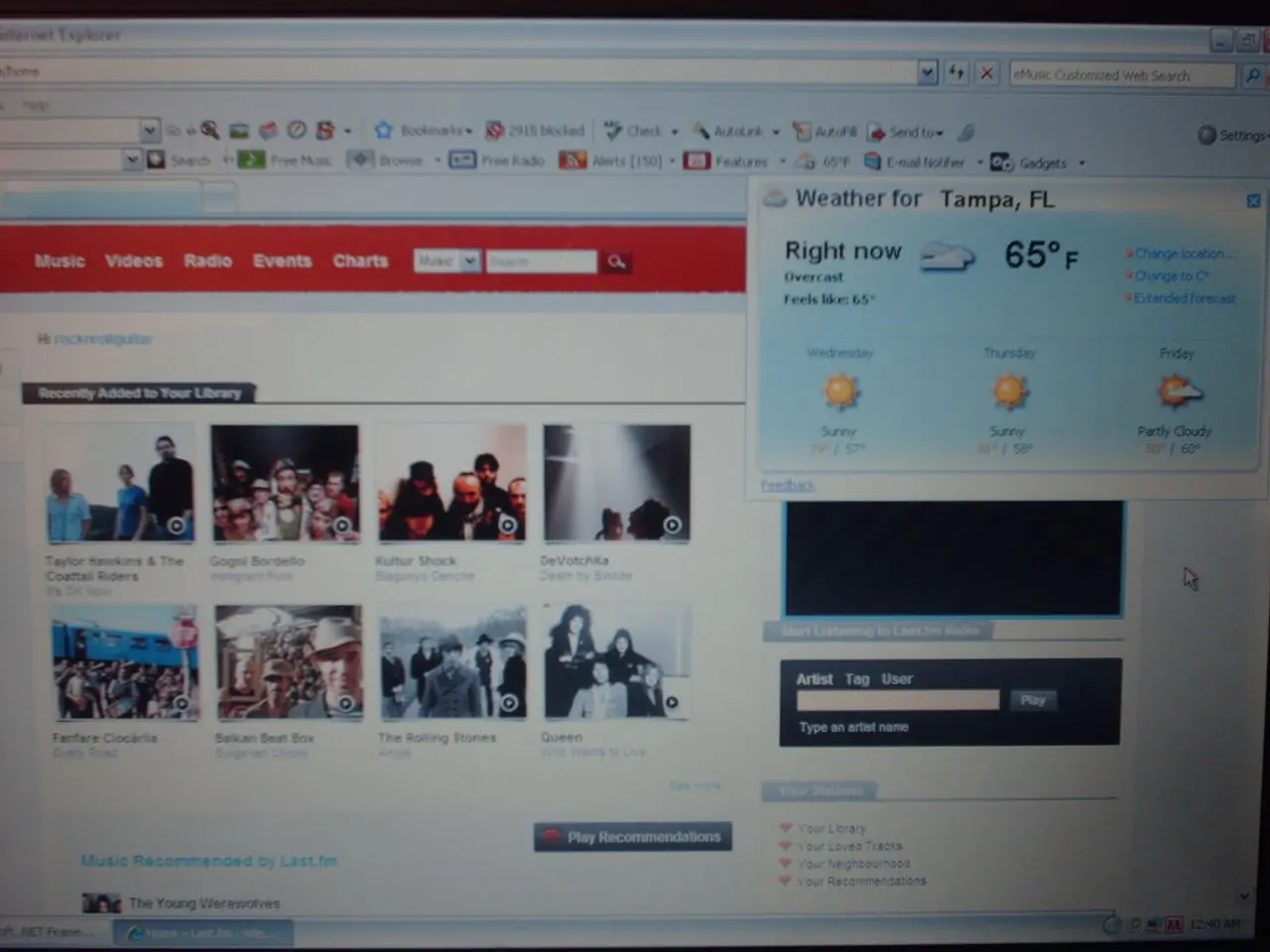YouTube Introduces Age Estimation for Users to Serve Suitable Content: A Breakdown
YouTube is taking a significant step forward in online safety with the introduction of an AI age estimation system. The new system, set to roll out in the U.S. on August 13, analyses users' behaviour to predict their age, rather than relying on user-declared birthdates [1][2][4].
The system uses machine learning to scrutinize various behavioural signals, such as video watch history, search history, account age, and account activity like Super Chats or purchases [1][4]. If the AI deems a user under 18, it automatically imposes age-appropriate protections and restrictions. These measures include limiting access to age-restricted content, disabling personalized ads, activating digital wellbeing features, and filtering recommendation algorithms to reduce teens' exposure to potentially harmful content [1][2][4].
However, if a user is mistakenly flagged as underage, they can verify their age by providing a credit card, a selfie, or government-issued ID, though they are not required to do so. If they choose not to verify, age protections remain in place, potentially restricting access to certain content and monetization features [2][3]. For instance, teen creators may find their uploads defaulting to private and have limitations on earning from gifts in live streams, leading to possible reductions in ad revenue since only non-personalized ads are served to underage users [2].
The implications of this new system are multifaceted. On one hand, it promises a more controlled and safer viewing experience for minors, with reduced exposure to inappropriate content. On the other hand, critics voice concerns about privacy, as the data used for AI inference could potentially be sensitive [2]. There's also the risk of false positives limiting access or monetization unfairly for some users and creators [2].
Premium YouTube users may be less impacted since their age can be more easily verified through payment information [3]. Yet, the system's potential impact on creators' revenue and user experience is undeniable. Particularly those whose content appeals to younger audiences could see a dip in ad revenue due to the serving of non-personalized ads to minors [2].
In conclusion, YouTube’s AI-driven age estimation system marks a significant shift in online safety, dynamically assessing age through behavioural data and adjusting platform access accordingly. However, it also raises important questions about privacy, accuracy, and potential impacts on creators’ revenue and user experience [1][2][3][4]. As the internet continues to evolve, it's crucial to consider how we can build an online space that grows with us without leaving anyone behind.
[1] https://www.theverge.com/2021/7/13/22574327/youtube-ai-age-estimation-system-minors-protections [2] https://www.wsj.com/articles/youtube-is-building-an-ai-age-guessing-system-to-protect-kids-but-its-raising-privacy-questions-11626246800 [3] https://www.cnet.com/tech/services-and-software/youtube-ai-age-estimation-system-explained-what-it-means-for-you-and-your-kids/ [4] https://www.theguardian.com/technology/2021/jul/13/youtube-age-check-ai-system-under-18s-online-safety
The AI age estimation system on YouTube is not only involved with entertainment, but also contributes to social-media by ensuring a safer environment for minors. This system, which leverages technology by analyzing user behaviors, aims to limit the exposure of underage users to inappropriate content. However, concerns about privacy and potential false positives have been raised in relation to this technology.




